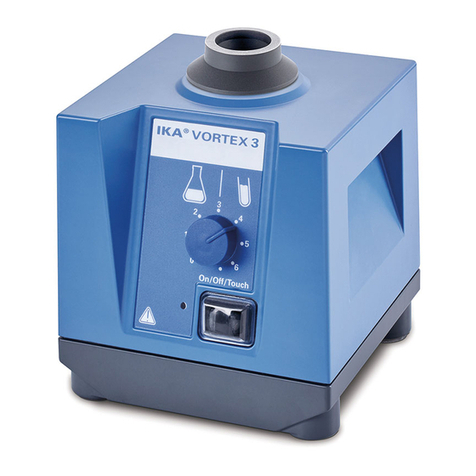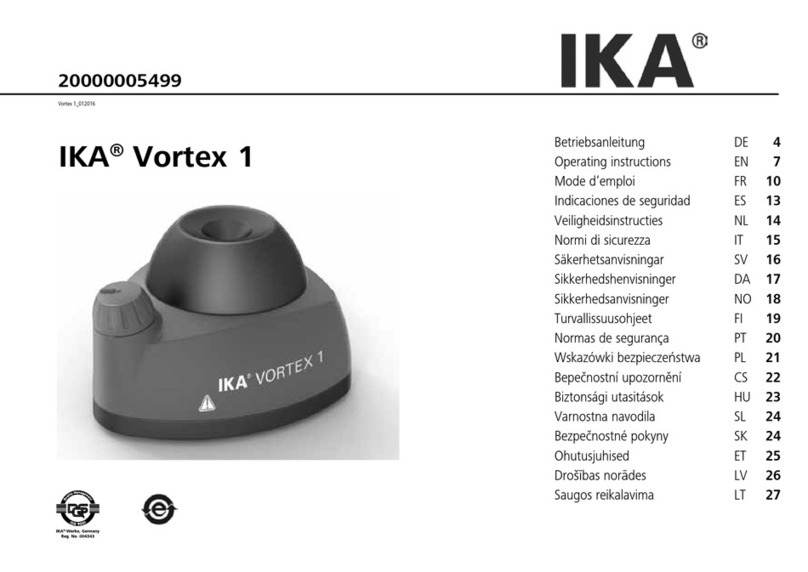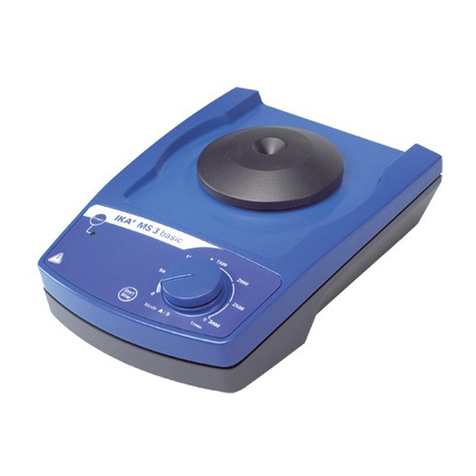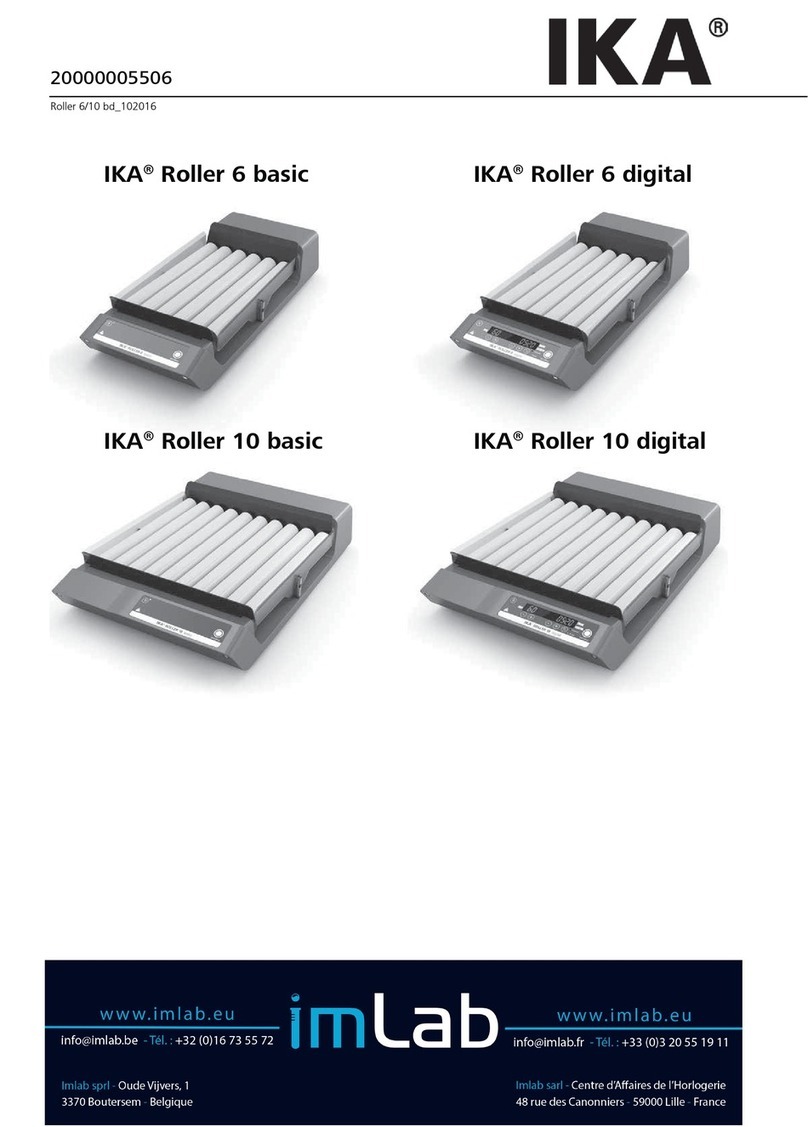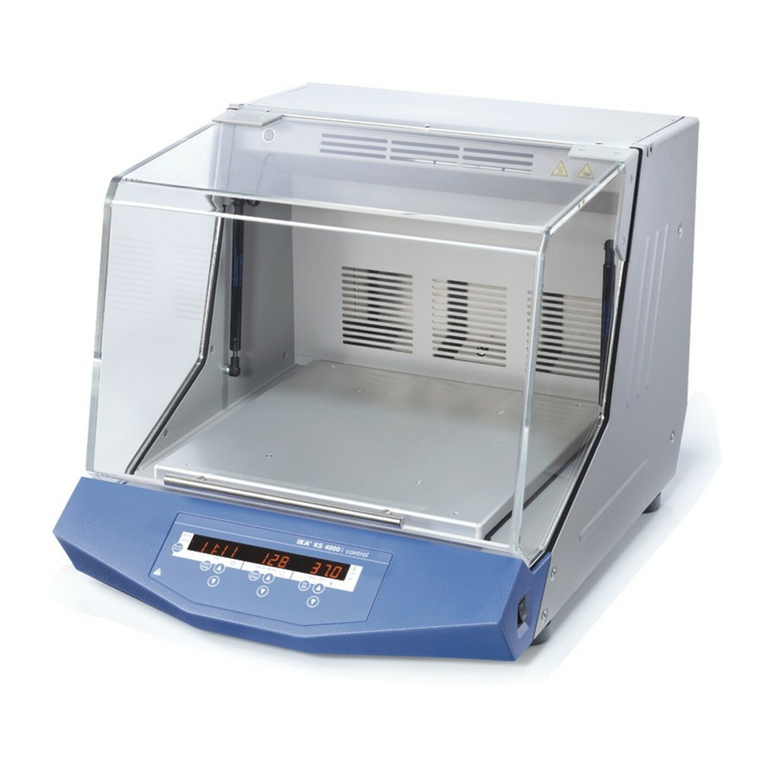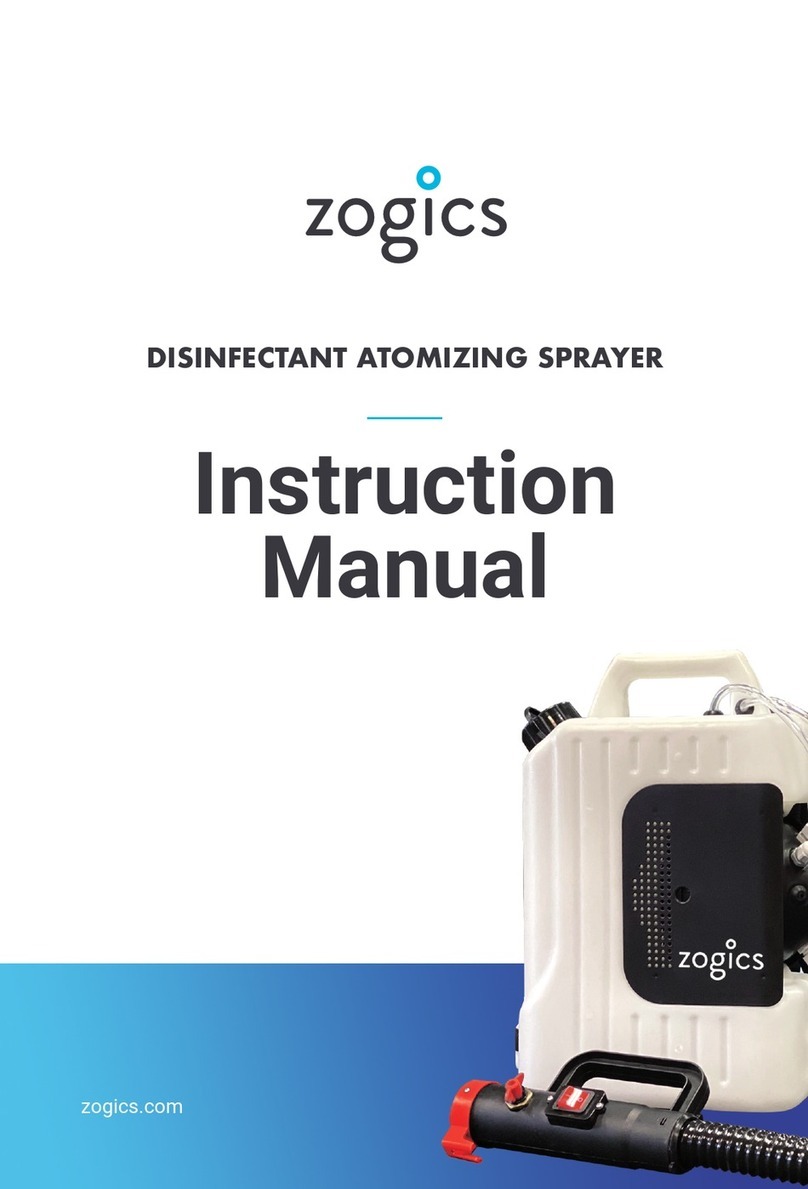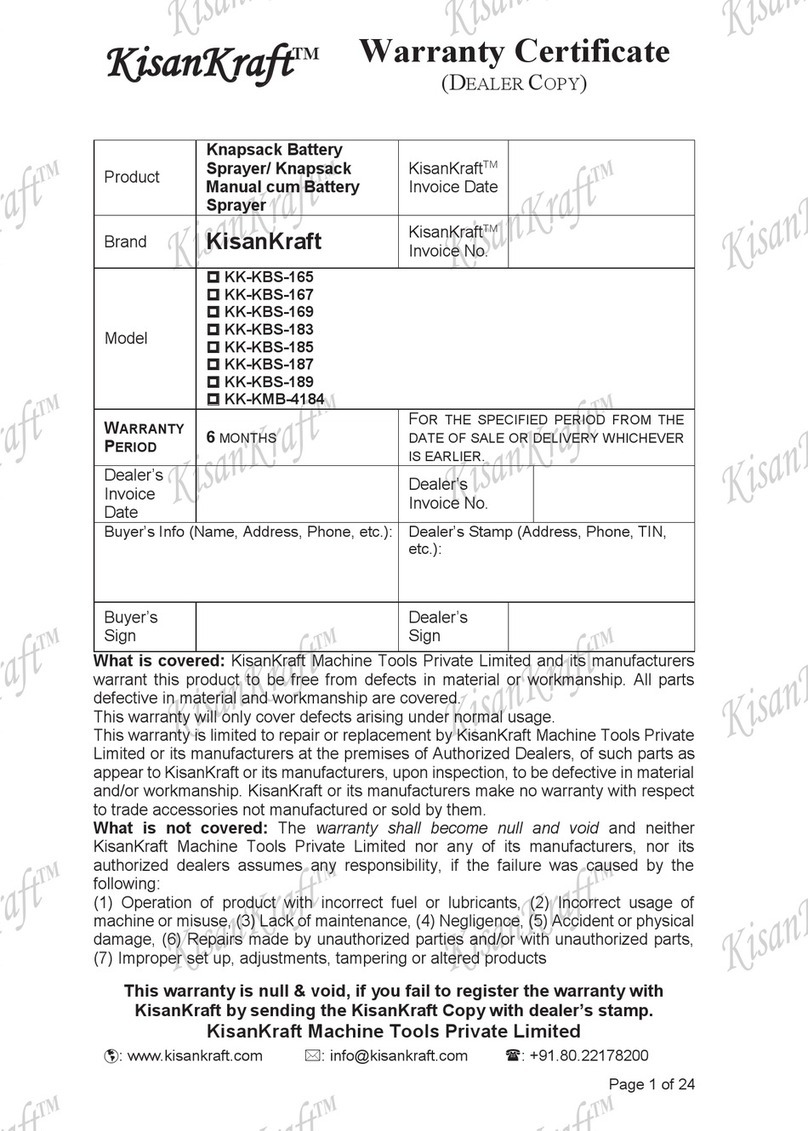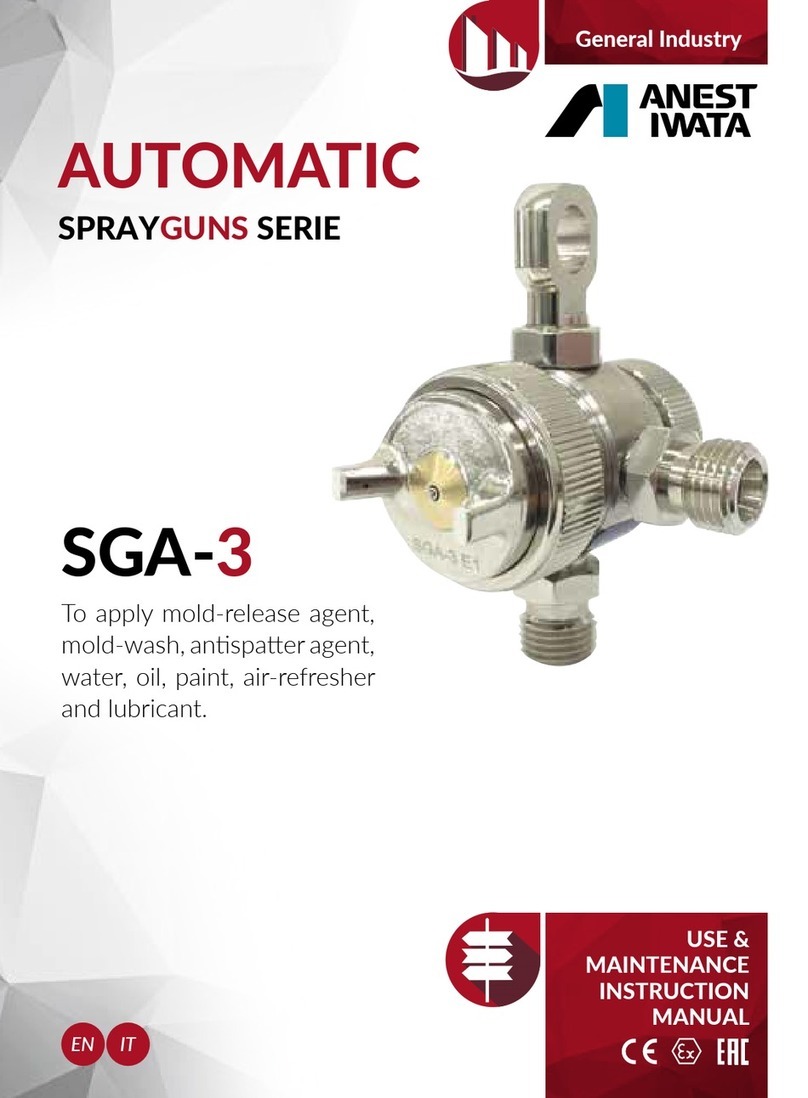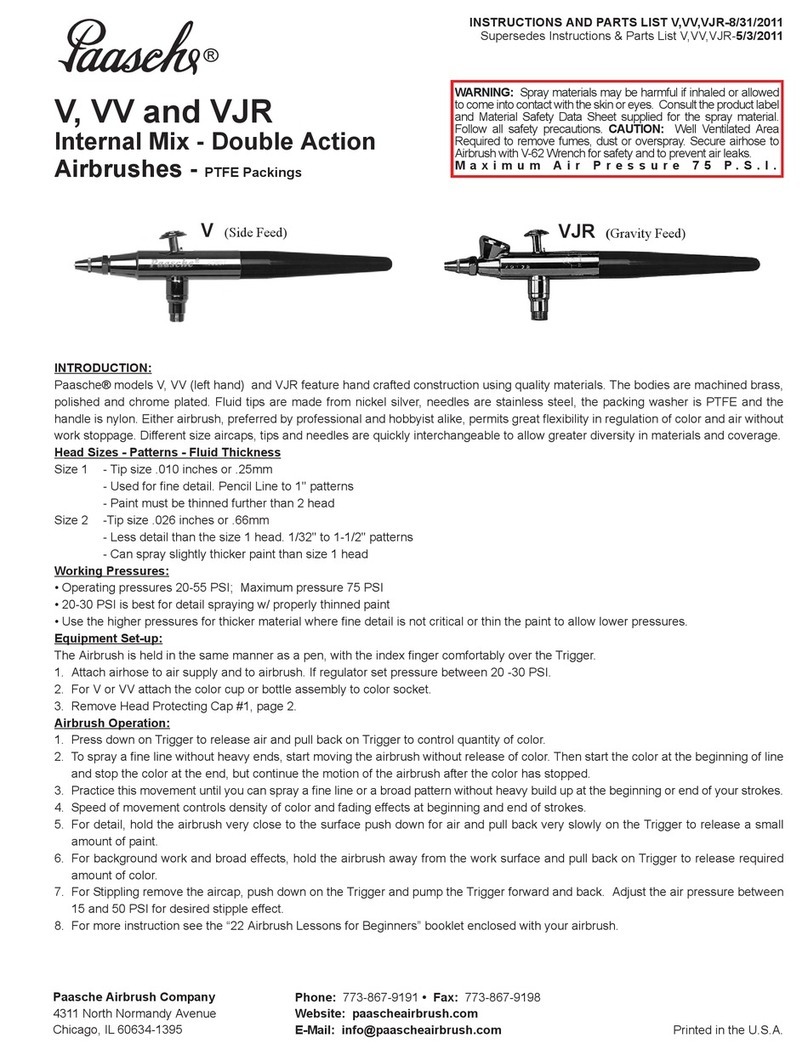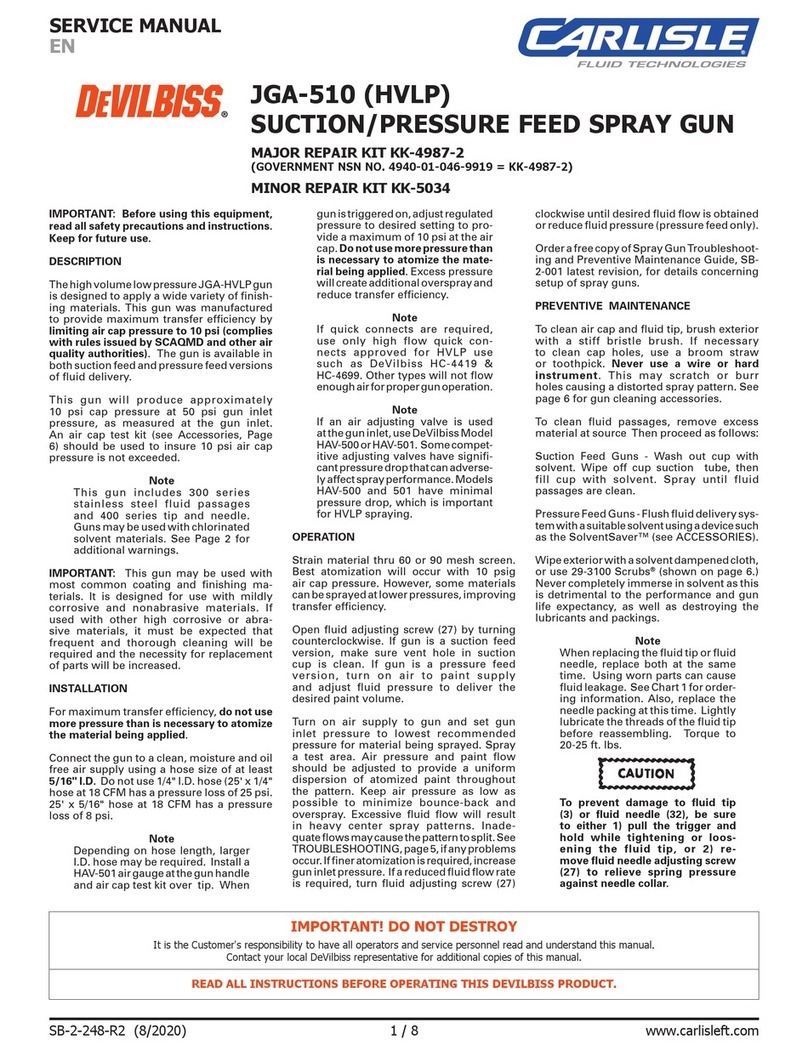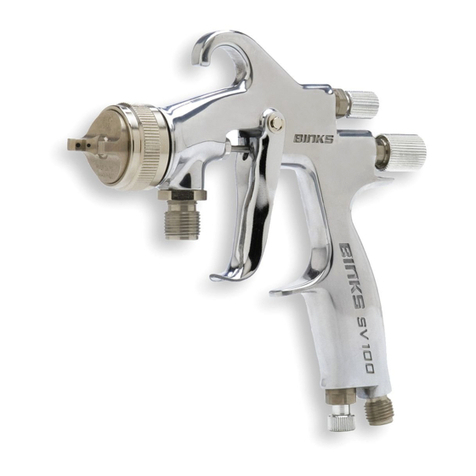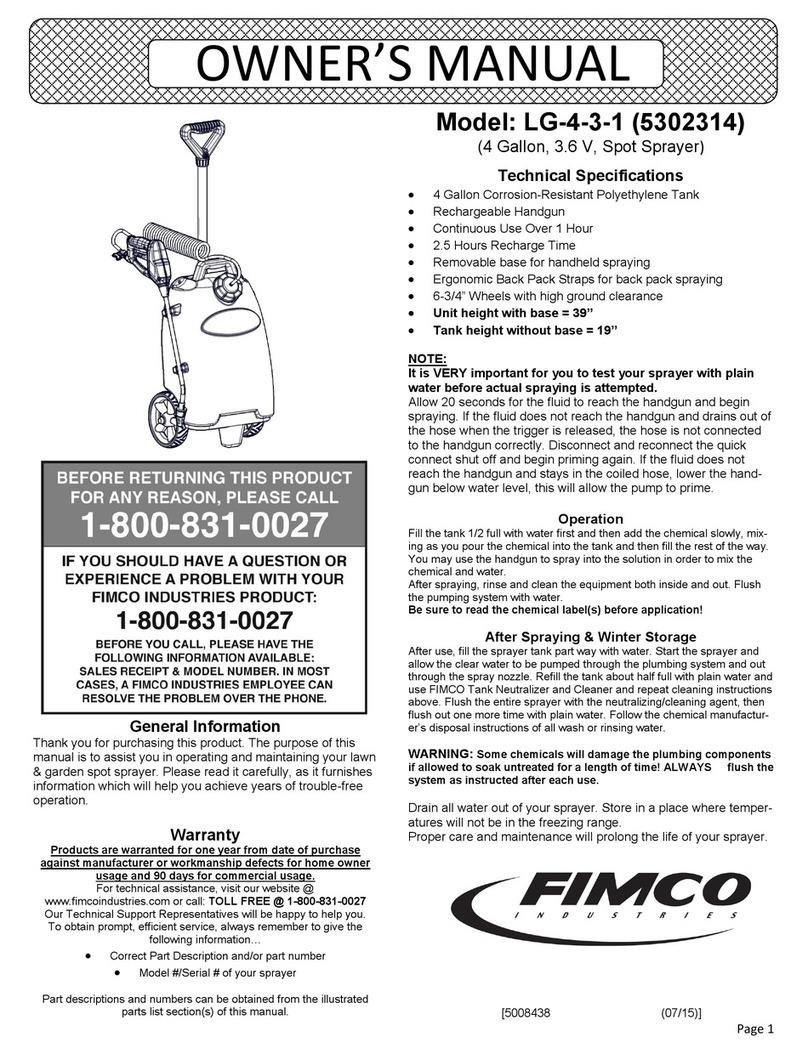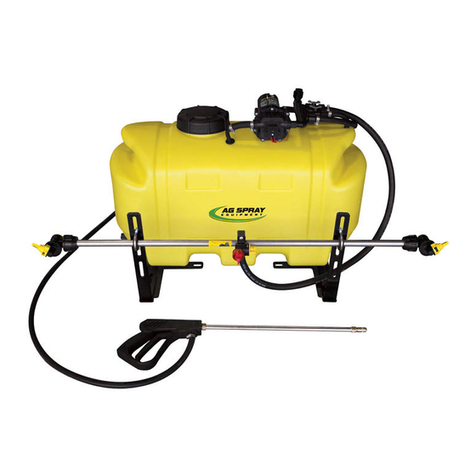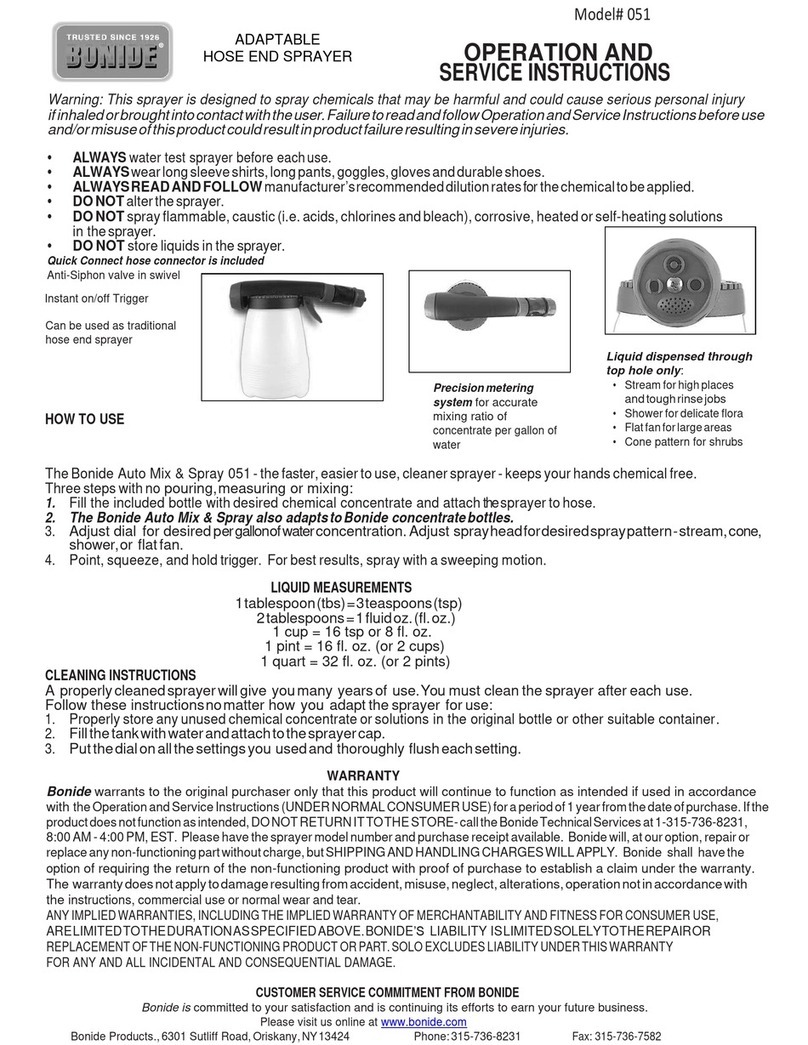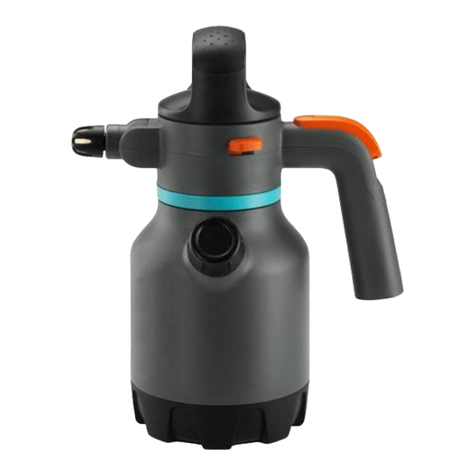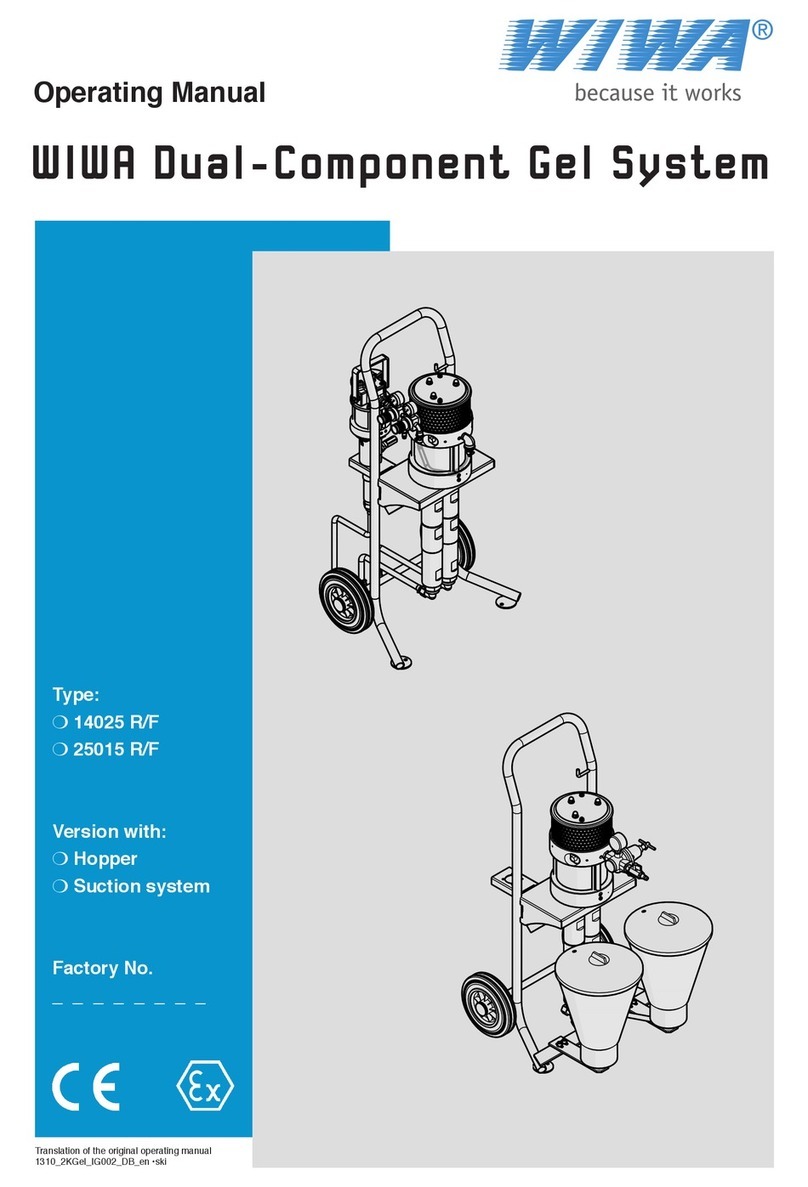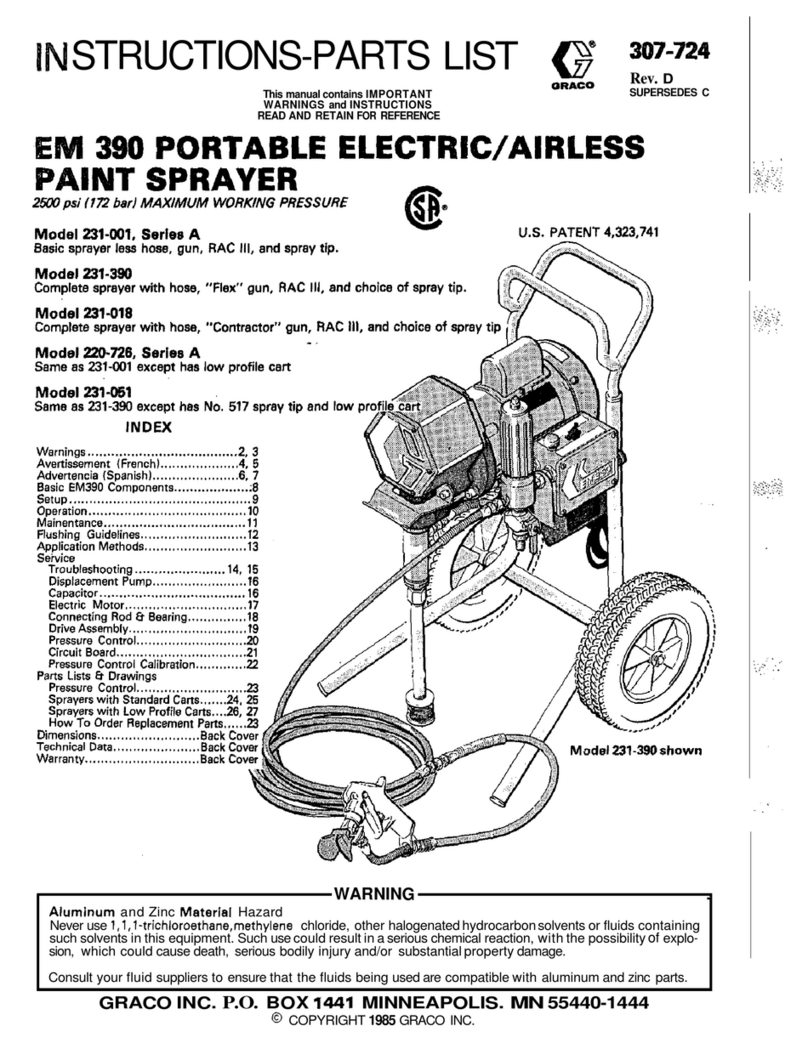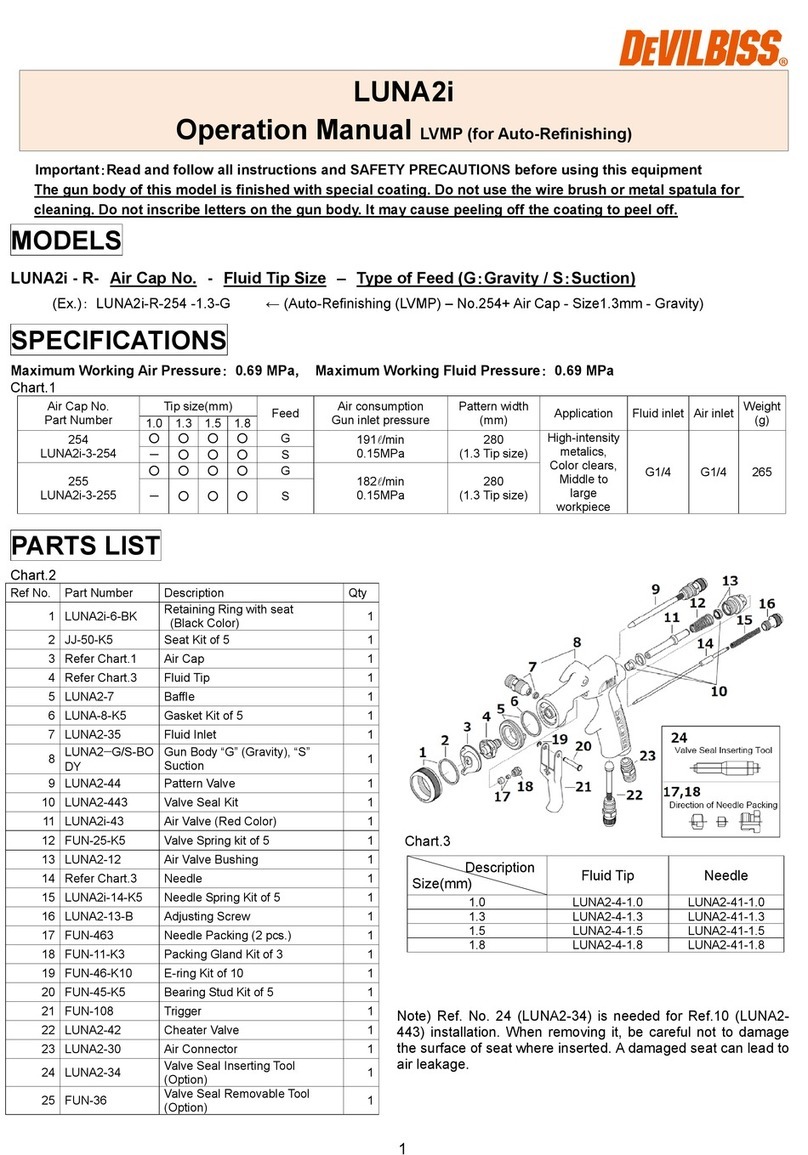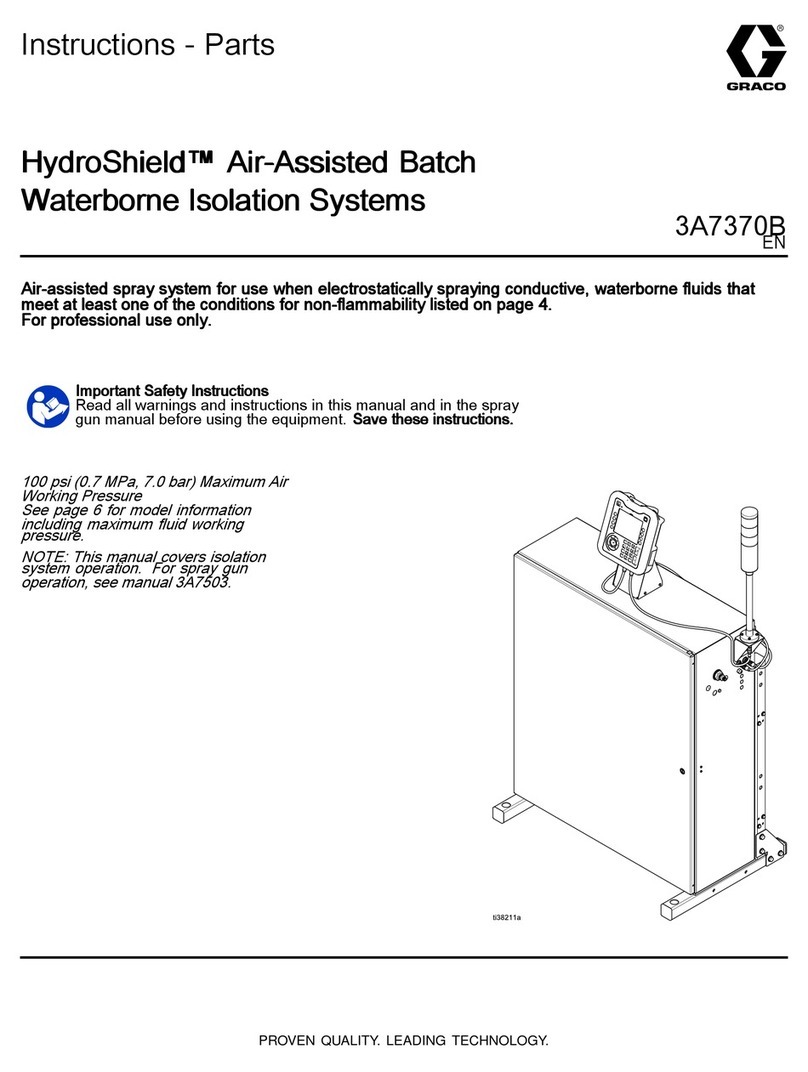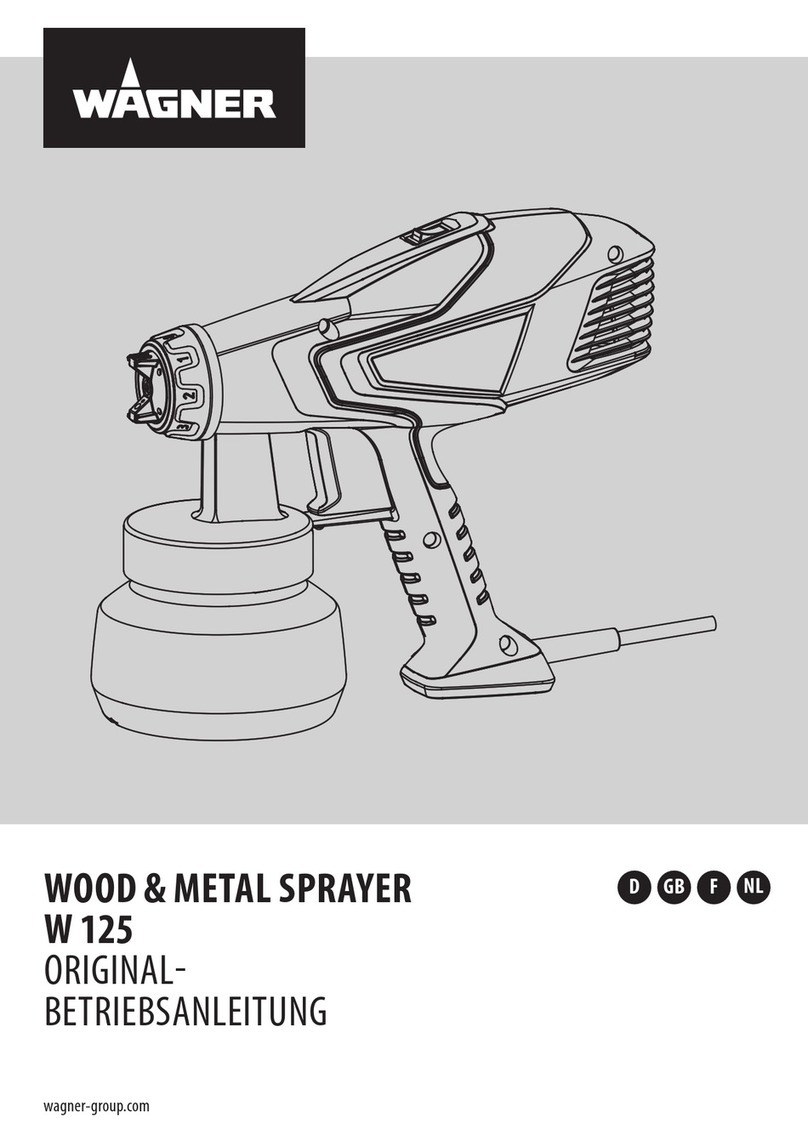
firmly secured.
Shaking vessels which are not properly secured could get damaged or
be projected out, thus causing injury. It is essential to regularly check
that the vessels to be shaken and the attachments are firmly secured,
especially before using the appliance again.
If you notice that the device is not running smoothly, the speed must
always be reduced until no more uneveness occurs in the operation.
Because of improper loading and the position of the center of gravity,
dynamic forces may arise during the agitation process that cause the
shaker to move about on the table. For limits on the load or the weight
placed on the agitation table at high shaking frequencies, please refer
to the diagram in the section “ Weight placed on the table“ (just before
the list of spare parts).
After an interruption in the power supply during an agitation procedu-
re, the device will not start running again by itself.
Additional hazards to the user may occur if inflammable materials are
used during the shaking operation.
Furthermore, the shaking unit may only be used to stir those materials or
material mixtures that the user knows will not react dangerously to the
extra energy produced by the stirring. This also applies to extra energy
by means of solar radiation during the shaking procedure.
The shaker may not been used in explosive atmospheres, for mixing
dangerous substances or under water.
Accessories may only be assembled once the plug has been disconnec-
ted.
The safety of the user cannot be guaranteed if the appliance is ope-
rated with accessories that are not supplied or recommended by the
manufacturer or if the appliance is operated improperly, contrary to the
manufacturer’s specifications.
The original
IKA
®
cable layout must be restored following servicing!
If the target value of the speed is changed too rapidly, the machine
(HS/KS 260 basic) will turn itself off automatically. Avoid allowing
objects to push or strike the agitation table.
Even small undetectable damage may result in serious damage to the
motor bearing. Careful handling will guarantee safe work and a long
service life of the machine.
The HS/KS260basic and HS/KS260control are suitable for usage in
various attachments for mixing liquids in bottles, flasks, test tubes and
bowls for a maximum supported weight of 7,5 kg.
It is designed for use in laboratories. The motion of the agitation table
or of the containers placed on it is circular or horizontal.
For usage in accordance with requirements, the machine must be
standing on a stable, even surface that is as slip-free as passible. In
addition, care must be taken that qbjects in the vicinty are a sufficient
distance away from the agitator and that they will not come too close
to the agitator while it is in operation.
Please unpack the equipment carefully and check for any damages. It
is important that any damages which may have arisen during transport
are ascertained when unpacking. If applicable a fact report must be
sent immediately (post, rail or forwarder).
The delivery scope covers:
A HS/KS 260 basic or HS/KS 260 control, for attachment screws, a
single-head spanner, a connection cable and operating instructions.
20
Proper use
Unpacking
